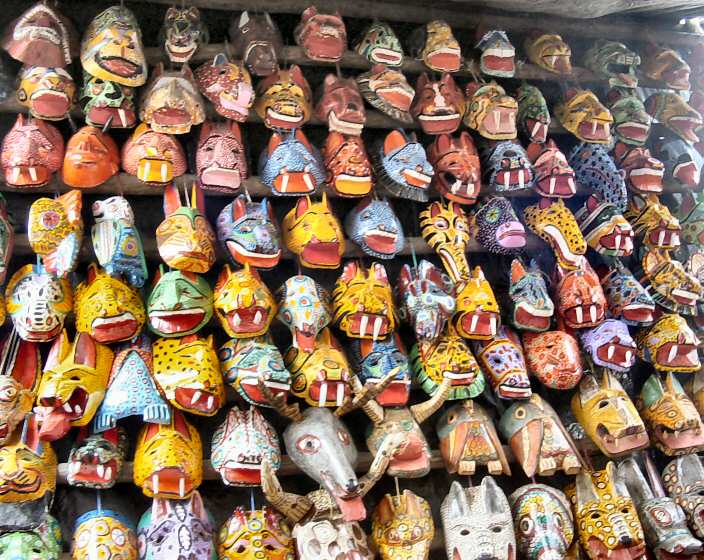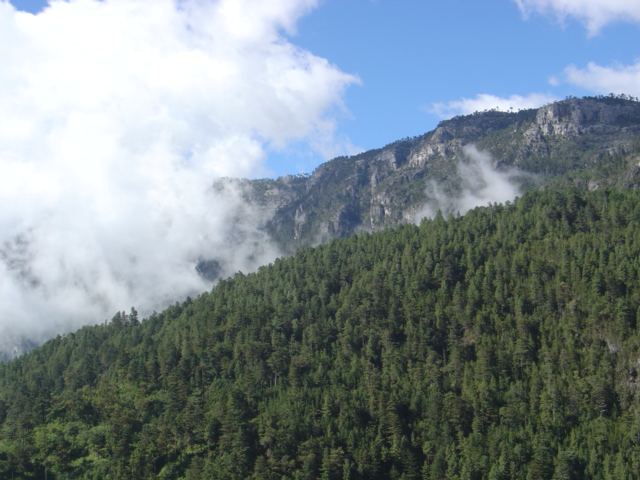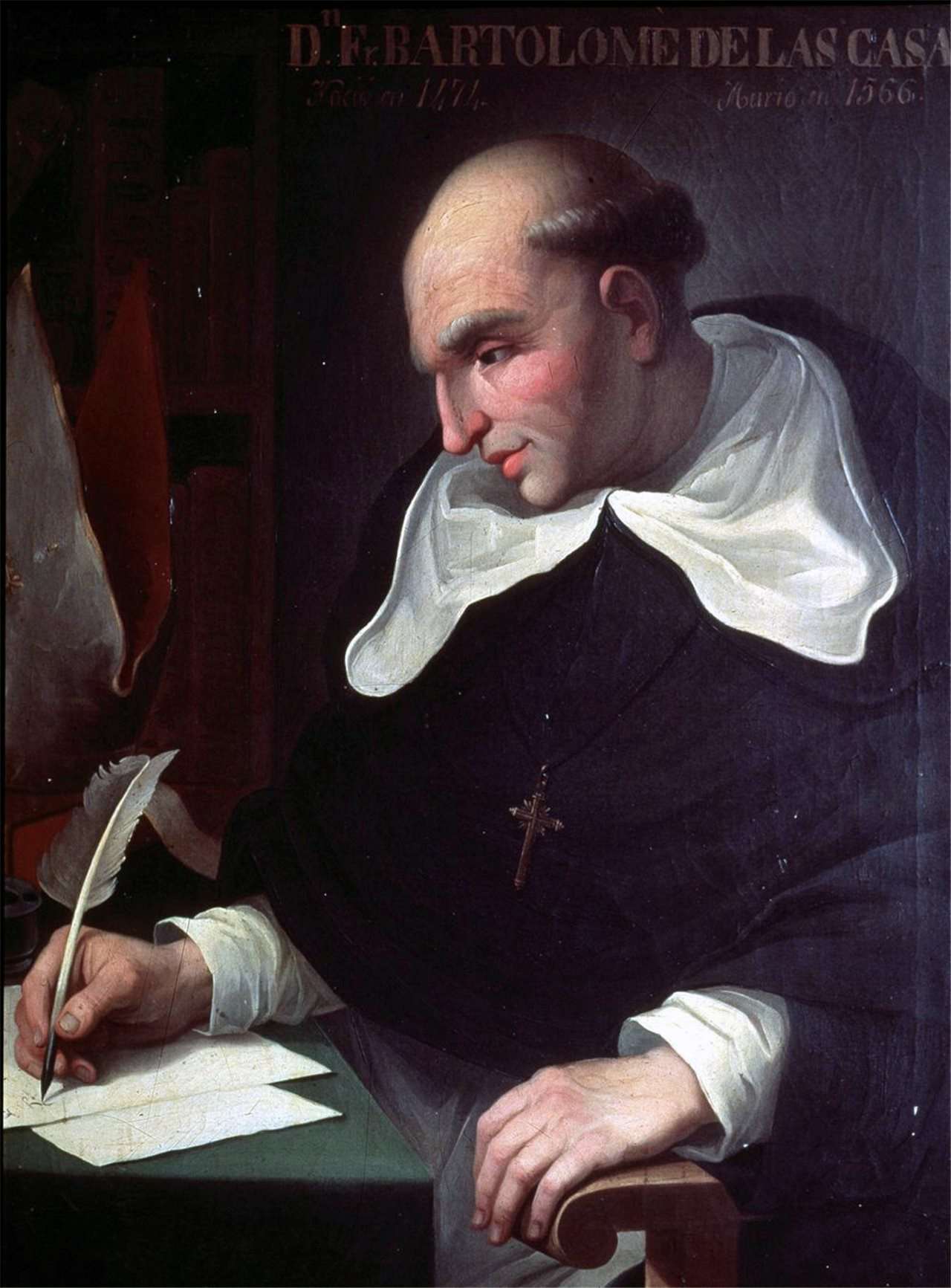|
Rabinal
Rabinal is a small town, with a population of 15,157 (2018 census), Population of cities & towns in Guatemala located in the Guatemalan department of Baja Verapaz, at . It serves as the administrative seat for the surrounding municipality of the same name. The municipality covers an area of 336 km² with a population of 40,797 (2018 census). The local people are predominantly Achi Maya [...More Info...] [...Related Items...] OR: [Wikipedia] [Google] [Baidu] |
Achi People
The Achi are a Maya ethnic group in Guatemala. They live in various municipalities in the department of Baja Verapaz. The municipalities they live in are Cubulco, Rabinal, San Miguel Chicaj, Salamá, San Jerónimo, and Purulhá, in addition to parts of Granados and el Chol. They speak Achi, which is closely related to K'iche'. History Pre-Columbian times Attack by the K'iche' The K'iche' cacique Quicab,There were several K'iche' kings named Quicab. It is assumed that the one in this story was the first. famous for his wealth of pearls, emeralds, gold, and silver, approached the Achi at Xetulul. At noon, the K'iche' began to fight the Achi, winning lands and villages without killing any of them, only tormenting them. When the Achi surrendered, they gave tribute of fish and shrimp. As a present, the Achi offered cocoa and pataxte to the main cacique, Francisco Izquin Ahpalotz y Nehaib, giving him validity as king and obeying him as tributaries. The Achi gave him the ... [...More Info...] [...Related Items...] OR: [Wikipedia] [Google] [Baidu] |
Rabinal Achí
The ''Rabinal Achí'' is a Maya theatrical play written in the Kʼicheʼ language and performed annually in Rabinal, Baja Verapaz, Guatemala. Its original name is ''Xajoj Tun'', meaning "Dance of the Tun" instrument also known as wooden drum. This is one of the few surviving performance pieces from before colonization. It takes place every year on January 25 and involves the entire community of Rabinal. A combination of movement, song, and instrumentation meld the piece together. This performance has been a part of Rabinal history for centuries, and continues to be a part of the culture today. The story of the ''Rabinal Achí'' centers on a historical feud between Rabinal and Kʼicheʼ, two neighboring cities. Colorful costumes and wooden masks are used to differentiate the characters as they play out their roles in the song-dance-drama. Origins The ''Rabinal Achí'' is a Maya song-dance-drama from the fifteenth century that uses vibrant costumes and wooden masks to tell th ... [...More Info...] [...Related Items...] OR: [Wikipedia] [Google] [Baidu] |
Maya Peoples
The Maya peoples () are an ethnolinguistic group of indigenous peoples of Mesoamerica. The ancient Maya civilization was formed by members of this group, and today's Maya are generally descended from people who lived within that historical region. Today they inhabit southern Mexico, Guatemala, Belize, El Salvador, and Honduras. "Maya" is a modern collective term for the peoples of the region, however, the term was not historically used by the indigenous populations themselves. There was no common sense of identity or political unity among the distinct populations, societies and ethnic groups because they each had their own particular traditions, cultures and historical identity. It is estimated that seven million Maya were living in this area at the start of the 21st century. Guatemala, southern Mexico and the Yucatán Peninsula, Belize, El Salvador, and western Honduras have managed to maintain numerous remnants of their ancient cultural heritage. Some are quite integrat ... [...More Info...] [...Related Items...] OR: [Wikipedia] [Google] [Baidu] |
Sacapulas
Sacapulas is a town and municipality in the Guatemalan department of El Quiché. History Pre Hispanic era Worried about the defection of the aj K’ub’ul family chief -who had taken his family away in order to look for fertile and, above all, pacific land-, the K’iche’ king sent a group of soldiers to control every single movement of them. He was afraid that the aj K'ub'ul would look for reinforcements from other ethnic group in the area to form a strong army and then attack the k'iche's. The warriors settled to the east of the aj K’ub’ul and since the latter had moved away to look for peace and tranquility, they were a very peaceful community. And that is exactly what the warriors inform the K’iche’ king, reassuring him by telling that he should not worry about the exiled group, as they were really peaceful. As time went by, the k'iche' warriors realized that the aj K'ub'ul life was very different from the one they were used to have under the ruling of thei ... [...More Info...] [...Related Items...] OR: [Wikipedia] [Google] [Baidu] |
Achi Language
Achi (''Achí'' in Spanish) is a Mayan language very closely related to Kʼicheʼ (''Quiché'' in the older orthography). It is spoken by the Achi people, primarily in the department of Baja Verapaz in Guatemala. There are two Achi dialects. Rabinal Achi is spoken in the Rabinal area, and Cubulco Achi is spoken in the Cubulco area west of Rabinal. One of the masterpieces of precolumbian literature is the Rabinal Achí, a theatrical play written in the Achi language. Phonology Consonants * Voiceless plosives can have aspirated allophones , either when preceding a consonant or in word-final position. * A pharyngeal fricative sound can be heard before vowels or in word-initial or intervocalic environments preceding vowels. * A uvular consonant can also be heard as velar in some environments. when preceding a velar consonant can be heard as a velar nasal . * Sonorants when preceding a voiceless consonant or in word-final position can occur sounding voiceless . ... [...More Info...] [...Related Items...] OR: [Wikipedia] [Google] [Baidu] |
Maya Language
The Mayan languagesIn linguistics, it is conventional to use ''Mayan'' when referring to the languages, or an aspect of a language. In other academic fields, ''Maya'' is the preferred usage, serving as both a singular and plural noun, and as the adjectival form. form a language family spoken in Mesoamerica, both in the south of Mexico and northern Central America. Mayan languages are spoken by at least 6 million Maya people, primarily in Guatemala, Mexico, Belize, El Salvador and Honduras. In 1996, Guatemala formally recognized 21 Mayan languages by name,Achiʼ is counted as a variant of Kʼicheʼ by the Guatemalan government. and Mexico recognizes eight within its territory. The Mayan language family is one of the best-documented and most studied in the Americas. Modern Mayan languages descend from the Proto-Mayan language, thought to have been spoken at least 5,000 years ago; it has been partially reconstructed using the comparative method. The proto-Mayan language di ... [...More Info...] [...Related Items...] OR: [Wikipedia] [Google] [Baidu] |
Baja Verapaz Department
Baja Verapaz () is a department in Guatemala. The capital is Salamá. Baja Verapaz contains the Mario Dary Biotope Preserve, preserving the native flora and fauna of the region, especially the endangered national bird of Guatemala, the Resplendent Quetzal. Municipalities * Cubulco * Granados * Purulhá *Rabinal *Salamá Salamá is a city in Guatemala. It is the capital of the department of Baja Verapaz and it is situated at 940 m above sea level. The municipality of Salamá, for which the city of Salamá serves as the administrative centre, covers a tota ... * San Jerónimo * San Miguel Chicaj * Santa Cruz El Chol References External linksBaja Verapaz Website Departments of Guatemala {{Guatemala-geo-stub ... [...More Info...] [...Related Items...] OR: [Wikipedia] [Google] [Baidu] |
Chahal, Guatemala
Chahal is a municipality in the Guatemalan department of Alta Verapaz. The name originates from the Mayans. History Spanish conquest and the Dominican friars On his second visit to Guatemala, in 1537, friar Bartolome de las Casas, O.P. wanted to employ his new method of conversion based on two principles: 1) to preach the Gospel to all men and treat them as equals, and 2) to assert that conversion must be voluntary and based on knowledge and understanding of the Faith. It was important for Las Casas that this method be tested without meddling from secular colonists, so he chose a territory in the heart of Guatemala where there were no previous colonies and where the natives were considered fierce and war-like. Because it had not been possible to conquer the land by military means, the governor of Guatemala, Alonso de Maldonado, agreed to sign a contract promising that if the venture was successful he would not establish any new encomiendas in the area. Las Casas's group of ... [...More Info...] [...Related Items...] OR: [Wikipedia] [Google] [Baidu] |
Bartolomé De Las Casas
Bartolomé de las Casas, Dominican Order, OP ( ; ; 11 November 1484 – 18 July 1566) was a 16th-century Spanish Empire, Spanish landowner, friar, priest, and bishop, famed as a historian and social reformer. He arrived in Hispaniola as a layman then became a Dominican Order, Dominican friar and priest. He was appointed as the first resident Bishop of Chiapas, and the first officially appointed "Protector of the Indians". His extensive writings, the most famous being ''A Short Account of the Destruction of the Indies'' and ''Historia de Las Indias'', chronicle the first decades of colonization of the Spanish West Indies, West Indies. He described the atrocities committed by the colonizers against the indigenous peoples. Arriving as one of the first Spanish (and European) settlers in the Americas, Las Casas initially participated in, but eventually felt compelled to oppose, the abuses committed by colonists against the Indigenous peoples of the Americas, Native Americans. As a res ... [...More Info...] [...Related Items...] OR: [Wikipedia] [Google] [Baidu] |
Cobán
Cobán ( kek, Kob'an), fully Santo Domingo de Cobán, is the capital of the department of Alta Verapaz in central Guatemala. It also serves as the administrative center for the surrounding Cobán municipality. It is located 219 km from Guatemala City. As of the 2018 census the population of the city of Cobán was at 212,047. The population of the municipality, which covers a total area of 1,974 km², was at 212,421, according to the 2018 census. Cobán, at a height of above sea level, is located at the center of a major coffee-growing area. Etymology The name "Cobán" comes from Q'eqchi' (between clouds) History Order of Preachers in the Vera Paz Between 1530 and 1531, captain on his way to Ciudad Real accidentally discovered the lagoon and hill of People of that place had historically traded with all the people that the Spaniards had conquered, so, knowing what was coming, they sought refuge in the jungle. The Spaniards tried in vain to conquer the ... [...More Info...] [...Related Items...] OR: [Wikipedia] [Google] [Baidu] |
Lago De Atitlán
__NOTOC__ Lago, which means "lake" in Italian, Portuguese, Spanish and Galician, may refer to: Places *Lago, Calabria, a ''comune'' in the Province of Cosenza, Italy *Lago, Mexico, a municipality zone in the State of Mexico * Lago District, a ''distrito'' in Niassa Province, Mozambique *Lago, Portugal, a ''freguesia'' in the District of Braga *Lago, Asturias, a ''parroquia'' in the ''municipio'' of Allande, Spain * Lago, Texas, a census-designated place *Lagos, Nigeria, the largest city in Nigeria People *Anders Lago, Swedish politician *Ângela Lago (1945–2017), Brazilian children's writer and illustrator *Antonio Lago, Venice-born French motor vehicle manufacturer *Fábio Lago, Brazilian actor *Nais Lago, Italian actress *Virginia Lago (born 1946), Argentine actress Other uses *Lago (Madrid Metro), a station on Line 5 *Talbot-Lago, a type of car *''Lago'', a fictional western town depicted in the film, ''High Plains Drifter ''High Plains Drifter'' is a 1973 American W ... [...More Info...] [...Related Items...] OR: [Wikipedia] [Google] [Baidu] |




